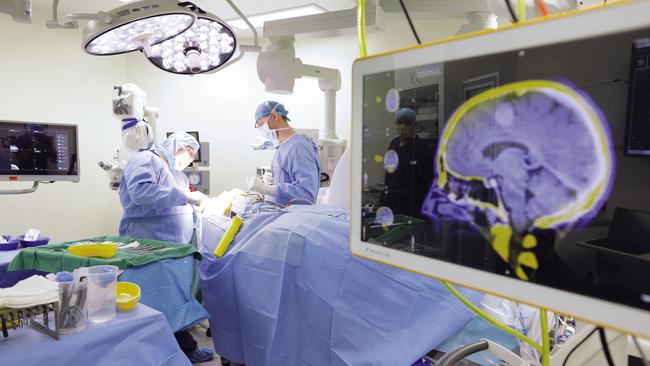Health insurance premiums are heading higher but by how much?
Australians are expected to pay significantly more for health insurance but talk of a double digit premium rise if Bupa caves in to Ramsay’s demands is ‘fanciful’.

Health insurers and hospital operators are more divided about the impact on customers if Bupa caves to Ramsay Health Care’s demands for a large increase in payments.
Modelling by the private hospital concludes that there would not be a double-digit hike on insurance premiums if Ramsay is successful in seeking an increase that splits the difference of a 7 per cent increase in hospital costs to maintain the quality of care it provides.
The private health insurance lobby argues the figure Ramsay is seeking is too high and has warned that it would “set the scene” for double digit increases if Bupa capitulates to Ramsay.
The modelling, based on Australian Prudential Regulation Authority data, shows Bupa would have to pay every hospital in the country an extra 16 per cent in contract fees – not just Ramsay – to justify a 10 per cent increase.
Australian Private Hospitals Association chief Michael Roff said such a mega increase in unison would be unlikely, given health funds and hospitals negotiate contracts at different times on two or three-year schedules.
Private health insurance sources, however, say it is more likely that Australians would face an increase of around 5.5 per cent hike if Bupa met Ramsay’s demands. This level would still be high enough to put strain on household budgets, sparking a withdrawal of private health insurance of more than 100 basis points a year.
With about 13.6 million Australians having private health insurance – more than half the population – this would equate to about 136,000 people tearing up their policies each year and becoming solely reliant on the public system if they are sick.
Ramsay, Australia’s biggest private hospital operator, terminated its contract with Bupa this week after months of negotiations failed, sparking a debate about the affordability of private healthcare.
From October, Bupa members will have to pay potentially hundreds of dollars in out-of-pocket costs if they are treated at one of Ramsay’s 72 hospitals.
Bupa wants to ensure premiums are kept low to maintain private health membership, which in turn takes pressure off the public system and taxpayers, with the national health bill already 10.2 per cent of GDP and growing.
Bupa Asia Pacific chief executive Hisham El-Ansary said this week that if that withdrawal figure hit 10 per cent, it would result in a near doubling of public hospital waiting lists.
But Mr Roff believes that private health insurers should be able absorb an increase in hospital costs as they renegotiate contracts, highlighting the record $2bn profit the sector has generated in the past year from pandemic elective surgery bans limiting the amount of benefits paid.
“These deals could be sorted out quietly, behind closed doors, and in the vast majority of cases, that‘s what happens and most people wouldn’t be aware of the contracting arrangements that go on between hospitals and health funds,” Mr Roff said. “But every now and again, with these competitive commercial arrangements, there will be a breakout from the hospital‘s perspective.
“They are looking at continuing trying to maintain viability on the back of what has been an extremely difficult couple of years with massive reductions in revenue at the same time. They had big increases in costs, and all the challenges of managing staff and Covid in the hospitals and all of those issues while the health funds have been sitting back increasing profits because they haven‘t been paying for as much service.”

Health Minister Mark Butler has the ultimate say on health insurance premium rises, which are normally announced in December. Previously Labor, under former leader Bill Shorten, proposed 2 per cent cap on health insurance premium increases in 2018, which was criticised by private health insurers as too low.
Industry body Private Health- care Australia said Labor’s then policy would lead to eight insurers operating at a loss in the first year and put three on the brink of insolvency in the second, citing an analysis based on APRA data.
The pandemic has skewed private health insurance. Before Covid-19, scores of people, particularly the young and healthy, were withdrawing from health insurance to the point where former Australian Prudential Regulatory Authority executive Geoff Summerhayes warned in early 2020 that only three private health insurers would have a sustainable business model by this year.
While that prediction did not eventuate, UBS analyst Scott Russell said a survey by the investment bank “feedback suggests an ultimate reversion to pre-Covid participation and claims”. Although, Mr Russell said there was no improved sentiment towards the value of private health industry, which he expects will support the industry, upgrading earnings guidance for Medibank and NIB.
In a move aimed at further boosting sentiment, Australia’s five biggest health funds have returned $1.6bn to members via cash, financial hardship packages and premium rise deferrals, as part of their commitment to not profiteer from the pandemic.




To join the conversation, please log in. Don't have an account? Register
Join the conversation, you are commenting as Logout